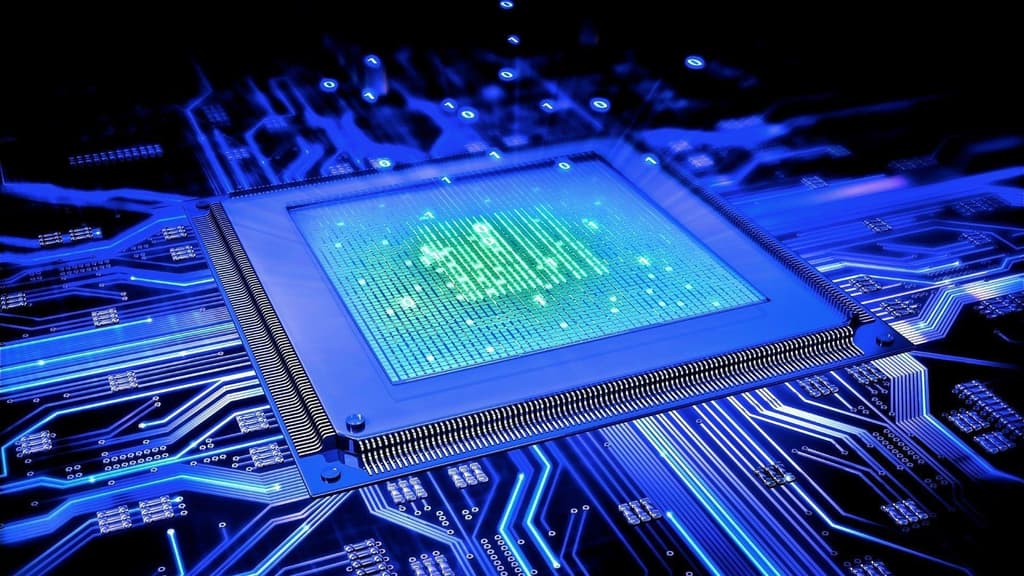Welcome to a comprehensive exploration of the most recent advancements and novelties in computer technology. As we delve into the complexities and innovations of this rapidly evolving field, this article aims to shed light on how these technological breakthroughs are shaping the future of computing. Whether you are a seasoned professional or just starting your journey in tech, this detailed guide will provide you with the necessary insights to understand the current landscape and the potential that lies ahead.
This examination covers a wide range of topics, from the fundamentals of rump kernels to the cutting-edge developments in quantum computing. Each section is meticulously crafted to provide both novice enthusiasts and tech veterans with valuable information that is both engaging and educational. Let’s embark on this technological journey to uncover the myriad ways in which computer technology is advancing and transforming our world.
The Evolution of Rump Kernels
Rump kernels represent a significant step in the modularization of operating system components. Initially conceptualized to simplify the development and testing of subsystems, they have evolved to become key players in the creation of robust, secure applications. This evolution marks a shift towards more flexible and adaptable systems that can easily be tailored to specific needs without compromising on performance or security.
The journey from traditional monolithic kernels to rump kernels has been driven by a need for greater scalability and isolation between processes. As we continue to push the boundaries of what is possible within system architecture, rump kernels stand out as a testament to the power of modular design.
Understanding Unikernels and Their Advantages
Unikernels are an innovative approach to application deployment that encapsulate an application within a lightweight, standalone operating system. These specialized images are designed to run on virtual machines, offering remarkable improvements in boot times, performance, and security. The advantages of unikernels are particularly evident in cloud environments where resource efficiency and security are paramount.
The architecture of unikernels minimizes the surface area for security breaches while optimizing resource use, which is a boon for developers looking to deploy applications swiftly and securely. As businesses increasingly move towards cloud infrastructures, unikernels provide a compelling solution that aligns with the demands of modern computing.
Recent Developments in Virtualization Technology
Virtualization technology has undergone transformative developments, with recent innovations focusing on improving efficiency and reducing overhead. The introduction of containers and microservices has revolutionized the way applications are developed and deployed, allowing for greater modularity and agility.
These advancements have also paved the way for more sophisticated management tools that provide enhanced control over virtual environments. The ability to dynamically allocate resources based on real-time demands is a significant step forward, ensuring optimal performance across diverse computing landscapes.
Advancements in Operating System Design
Operating systems are the backbone of any computing infrastructure, and their design has seen remarkable innovations aimed at enhancing user experience and system robustness. Modern operating systems are increasingly focusing on security, real-time performance, and support for a wide range of hardware.
This evolution is critical in an era where data security and system reliability are more important than ever. With the rise of internet-connected devices, operating systems must now manage more complex tasks and security protocols, necessitating continuous advancements to stay ahead of potential threats.

Innovative Networking Technologies in Computing
The realm of networking has not been left behind in the tech revolution. Innovative networking technologies such as software-defined networking (SDN) and network functions virtualization (NFV) have reshaped traditional networking paradigms, offering unprecedented flexibility and scalability.
These technologies allow network managers to configure, manage, and optimize network resources via software, reducing the reliance on hardware. As enterprises and service providers look to streamline operations and reduce costs, these innovative networking solutions stand at the forefront of modern network management.
Breakthroughs in Hardware-Software Co-Design
Hardware-software co-design has emerged as a crucial strategy for optimizing system performance and energy efficiency. This collaborative approach to designing both hardware and software components in tandem has led to significant breakthroughs in consumer electronics, mobile devices, and high-performance computing.
By aligning the development processes of hardware and software, designers can achieve higher levels of system integration and performance optimization. This synergy not only enhances the user experience but also drives innovation in applications requiring high computational power.
Security Enhancements in Modern Systems
The importance of security in modern computing systems cannot be overstated. Recent enhancements have focused on fortifying systems against increasingly sophisticated cyber threats. Techniques such as advanced encryption, biometric authentication, and behavior-based threat detection are becoming standard practices in protecting sensitive data and systems.
As cyber threats evolve, so too must our security strategies. The ongoing development of new security technologies and protocols is vital for maintaining the integrity and reliability of modern computing environments.
The Role of AI and Machine Learning in System Optimization
Artificial intelligence (AI) and machine learning (ML) are playing pivotal roles in the optimization of computing systems. These technologies are being employed to automate complex tasks, enhance decision-making processes, and improve the efficiency of operations across various industries.
The integration of AI and ML into system architectures is not just enhancing performance; it is also paving the way for more intelligent, self-managing systems that can predict and adapt to changes in their environment. This proactive approach to system management represents a significant leap forward in our quest to create more responsive and adaptive computing infrastructures.
Emerging Trends in Cloud Computing
Cloud computing continues to evolve, driven by demands for greater flexibility, increased collaboration, and enhanced security. Emerging trends in the cloud sector include hybrid cloud environments and edge computing, both of which offer unique advantages for handling data and applications.
Hybrid clouds provide the best of both private and public clouds by offering the flexibility of on-demand scalability while maintaining critical data on-premises for security reasons. Meanwhile, edge computing brings data processing closer to the source of data generation, thereby reducing latency and bandwidth use while increasing the speed of data analysis.
New Frontiers in Quantum Computing
Quantum computing remains one of the most intriguing areas of technology, with the potential to revolutionize fields ranging from cryptography to drug discovery. This novel form of computing harnesses the principles of quantum mechanics to solve problems that are currently beyond the reach of classical computers.
The race to achieve quantum supremacy is heating up, with significant investments being made in research and development. As this technology matures, it promises to open up new frontiers in computing, offering solutions to some of the most complex challenges in science and engineering.
Edge Computing: Pushing Boundaries Closer to the Source
Edge computing is transforming the way data is handled, processed, and delivered from millions of devices around the world. By processing data near the edge of the network, closer to where it is generated, edge computing dramatically reduces latency and bandwidth use, while enabling more sophisticated data processing capabilities on-site.
This shift is particularly crucial in the Internet of Things (IoT), where devices often require real-time processing and responsiveness. Edge computing not only enhances the performance of these devices but also supports a more scalable and efficient infrastructure for handling the massive amounts of data generated by the IoT.

Developments in Persistent Memory and Storage Solutions
The development of persistent memory is reshaping the landscape of data storage solutions. This technology offers the speed of RAM with the non-volatility of traditional storage, providing a unique solution that significantly enhances data processing speeds and system resilience.
As the volume of data continues to grow, the need for efficient, reliable storage solutions becomes more critical. Persistent memory represents a significant advancement in meeting these needs, providing faster access to large datasets and improving the overall performance of computing systems.
Future Directions in Computer Architecture
As we look to the future, the field of computer architecture is poised for exciting developments. Innovations such as neuromorphic computing, which mimics the neural structures of the human brain, and advanced chip technologies are expected to drive significant changes in how computers are designed and used.
The potential for these technologies to enhance computing power and efficiency is immense. As we continue to push the boundaries of what is possible, the next generation of computers will undoubtedly be faster, more efficient, and more capable than ever before.


